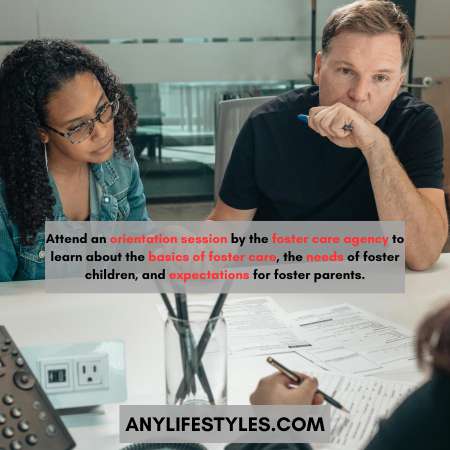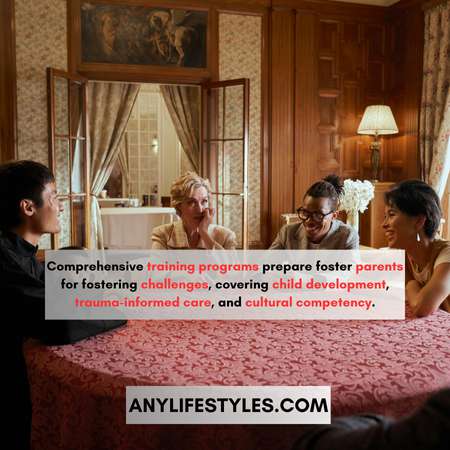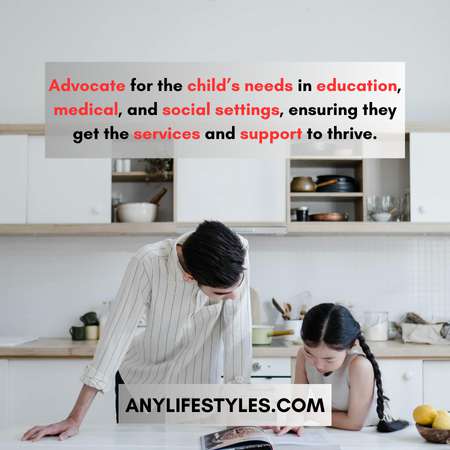Have you ever wondered what it means to be a foster parent? Foster parents are compassionate individuals who open their homes to needy children for temporary care. These children, often unable to live with their biological families due to various circumstances.
Foster parenting involves providing love, stability, and guidance to children during challenging times, making a profound impact on their lives.
The Crucial Role of Foster Parents in Society
Foster parents play a vital role in society by bridging the gap for children in need. They provide a safe place where children can heal, grow, and thrive while awaiting reunification with their biological families or adoption.

They provide a lifeline for vulnerable children, helping to shape a brighter future for them and, by extension, for society as a whole. Foster parents’ dedication greatly benefits the community by providing vulnerable children with essential care and support.
The Process of Becoming a Foster Parent
Becoming a foster parent involves several key steps to ensure that individuals or families are prepared to provide a safe and supportive environment for needy children. Here is an overview of the process:
1. Initial Inquiry:
Interested individuals start by contacting a local foster care agency to express their interest and gather information about the requirements and responsibilities of foster parenting.
2. Orientation:
Attend an orientation session provided by the foster care agency. This session covers the basics of foster care, the needs of foster children, and the expectations for foster parents.

3. Application:
Complete and submit an application to the foster care agency. The application typically includes personal information, background checks, and references.
4. Training:
Participate in pre-service training programs designed to prepare prospective foster parents for the challenges and rewards of foster care. Training topics may include child development, trauma-informed care, and behavior management.
5. Home Study:
Undergo thorough a home study assessment conducted by a social worker. This assessment includes interviews, home visits, and safety inspections to ensure the home environment is suitable for foster children.
6. Background Checks:
Complete comprehensive background checks, including criminal history and child abuse clearances, to ensure the safety of the children who will be placed in the home.
7. Approval:
Once all requirements are met, the foster care agency reviews the application and home study report. If approved, the individual or family becomes licensed to provide foster care.
8. Placement:
After approval, the foster parent may begin receiving placements. The agency matches children with suitable foster homes based on the needs of the child and the strengths of the foster family.
9. Ongoing Support:
Foster parents receive continuous support and resources from the foster care agency, including additional training, counseling, and access to support groups.
10. Reevaluation:
Regular reevaluations and home visits are conducted to ensure the foster home remains a safe and supportive environment for children.
Understanding the Responsibilities of a Foster Parent
Being a foster parent involves significant responsibilities to ensure the well-being and development of children placed in their care. Here are the key responsibilities foster parents undertake:
1. Providing a Safe Environment
One of the primary responsibilities of a foster parent is to create a safe and nurturing environment for their foster children. This involves ensuring that the home is free from hazards, providing nutritious meals, and maintaining a stable routine.

2. Meeting the Physical, Emotional, and Educational Needs of Foster Children
Foster parents must meet the diverse needs of their foster children. This includes taking them to medical appointments, enrolling them in school, and supporting their extracurricular activities.
Additionally, foster parents play a crucial role in addressing the emotional needs of the children by offering empathy, patience, and understanding. By providing holistic care, foster parents help children reach their full potential.
3. Working with Biological Families and the Foster Care System
Collaboration is key in foster parenting. Foster parents work closely with biological families, caseworkers, and other professionals involved in the child’s life.
This partnership aims to facilitate reunification when possible and ensure the child’s best interests are always at the forefront.
4. Cultural Sensitivity:
Respect and support the child’s cultural, ethnic, and religious background. Foster parents should encourage the child’s identity and heritage, ensuring that these aspects are honored and integrated into daily life.
5. Behavior Management:
Use positive behavior management techniques to address and correct behavioral issues. Foster parents should provide consistent rules and consequences while promoting positive behaviors.

Support Systems for Foster Parents
Foster parents play a crucial role in the lives of vulnerable children, and having robust support systems in place is essential to help them succeed in this demanding role.
Here are some support systems available to foster parents:
1. Foster Care Agencies:
Agencies provide initial training, ongoing education, and resources to help foster parents navigate the complexities of foster care.
They also offer caseworker support to address specific concerns and needs related to the foster children.
2. Financial Assistance:
Foster parents receive financial support to help cover the costs of caring for foster children. This includes monthly stipends for food, clothing, and other essentials, as well as additional funding for special needs and activities.
3. Training Programs:
Comprehensive training programs prepare foster parents for the challenges of fostering. Topics include child development, trauma-informed care, behavior management, and cultural competency. Ongoing training ensures that foster parents stay informed about best practices.

4. Respite Care:
Respite care services provide temporary relief for foster parents by offering short-term care for foster children. This allows foster parents to take breaks, manage stress, and attend to personal or family needs.
5. Therapeutic Services:
Access to therapeutic services for both foster children and parents helps address emotional and behavioral issues. This includes counseling, therapy, and mental health support to ensure the well-being of all family members.
How to Navigate the Journey of Foster Parenting
Becoming a foster parent is a significant commitment that requires careful preparation and ongoing support. Here are steps to help foster parents navigate the journey:
1. Build a Support Network:
Connect with other foster parents, support groups, and community resources. Having a strong support network can provide emotional support and practical advice.
2. Stay Flexible and Patient:
Be prepared for unexpected challenges and changes. Flexibility and patience are key to adapting to the needs and behaviors of foster children, who may have experienced trauma and instability.
3. Advocate for the Child:
Be a strong advocate for the child’s needs in educational, medical, and social settings. Ensure they receive the necessary services and support to thrive.

4. Promote Stability and Routine:
Provide a stable and consistent routine to help the child feel secure. Structure and predictability are important for children who have experienced disruption in their lives.
5. Encourage Positive Relationships:
Support the child in building positive relationships with peers, teachers, and other adults. Encourage activities that promote social skills and confidence.
6. Seek Ongoing Training:
Continue to educate yourself through additional training and workshops. Staying informed about best practices in foster care will help you better support the child.
7. Celebrate Milestones:
Acknowledge and celebrate the child’s achievements and milestones, no matter how small. Positive reinforcement builds self-esteem and encourages progress.
8. Prepare for Transitions:
Help the child prepare for transitions, whether it’s reunification with their biological family, adoption, or aging out of the foster care system. Provide support and guidance to ease these transitions.
Conclusion
Foster parenting is a profoundly impactful way to contribute to the well-being of vulnerable children. By opening your heart and home, you have the opportunity to make a lasting difference in a child’s life.
By understanding the responsibilities, available support systems, and maintaining flexibility and patience, foster parents can provide the stability and care that vulnerable children need to thrive.
If you are considering becoming a foster parent, take the first step today. Reach out to local foster care agencies, attend informational sessions, and connect with experienced foster parents.
Together, we can create a brighter future for children and build a community of support and compassion.





